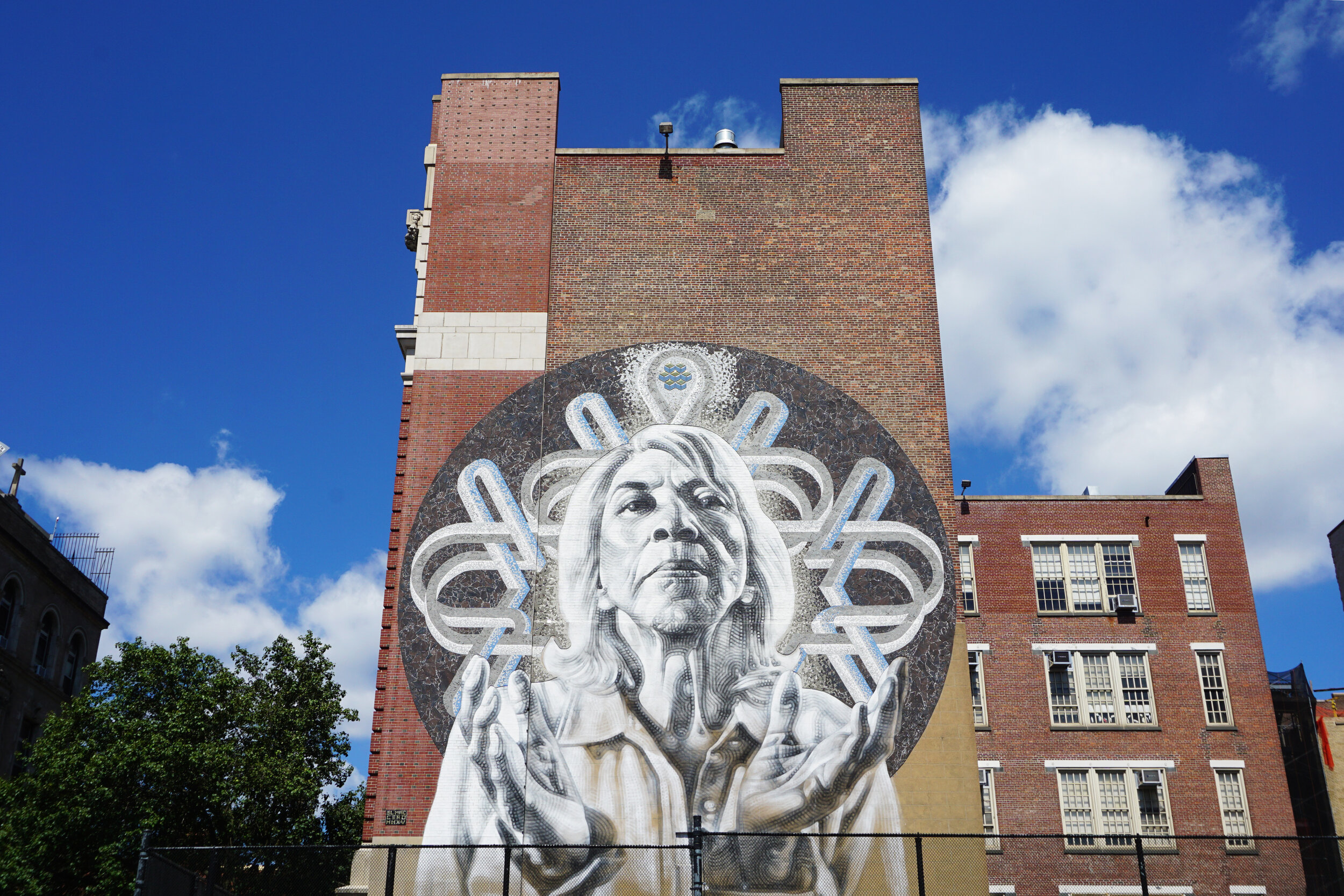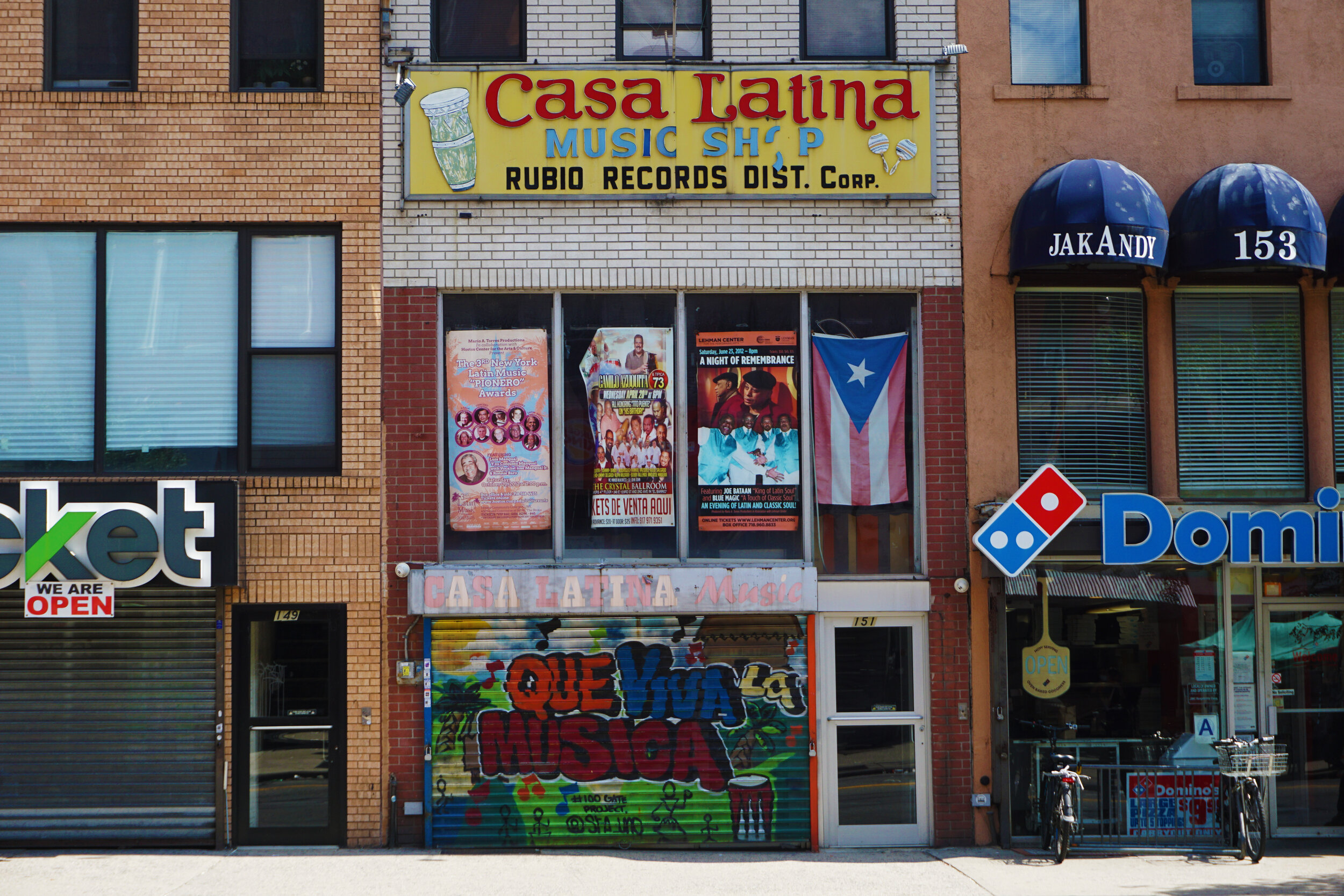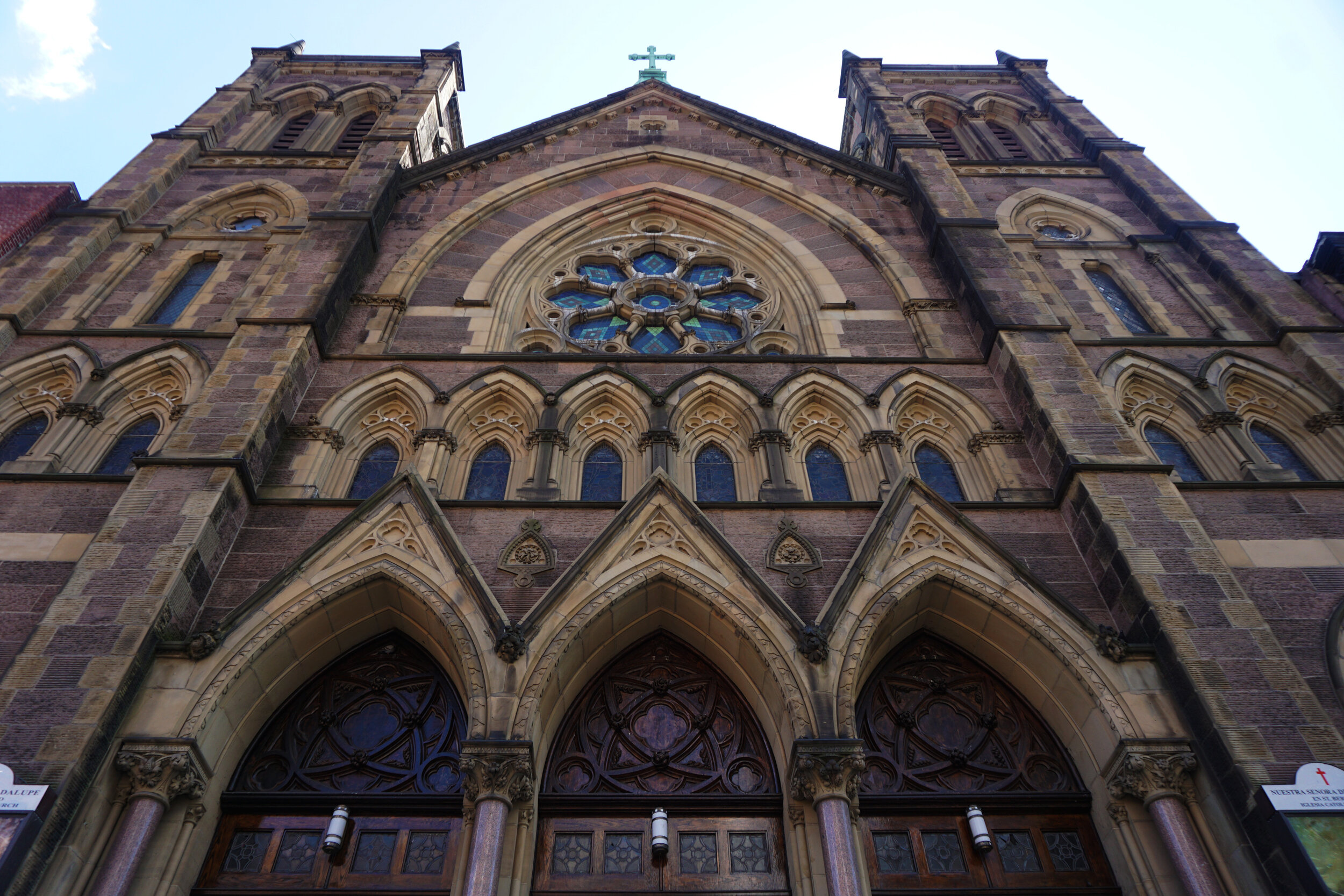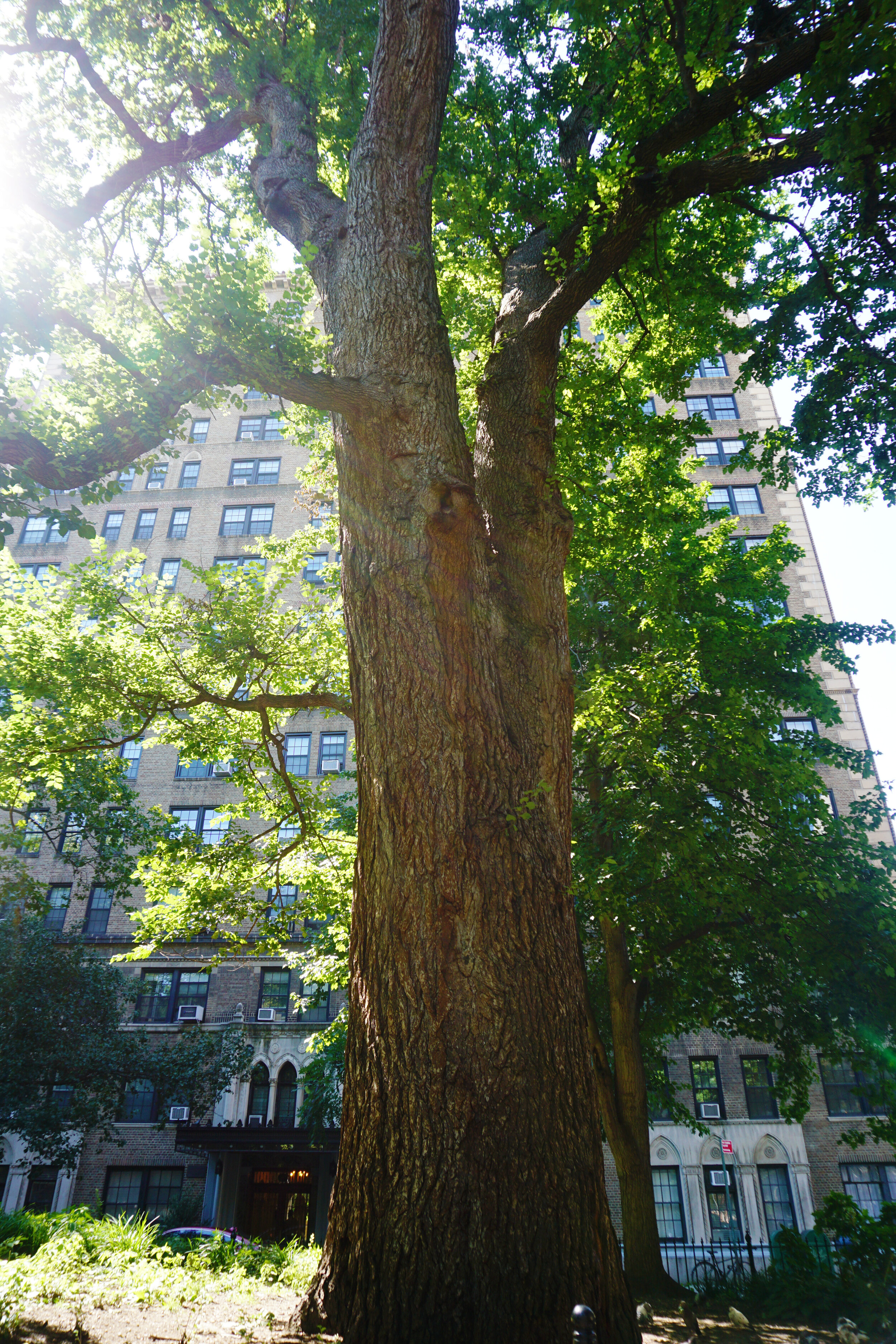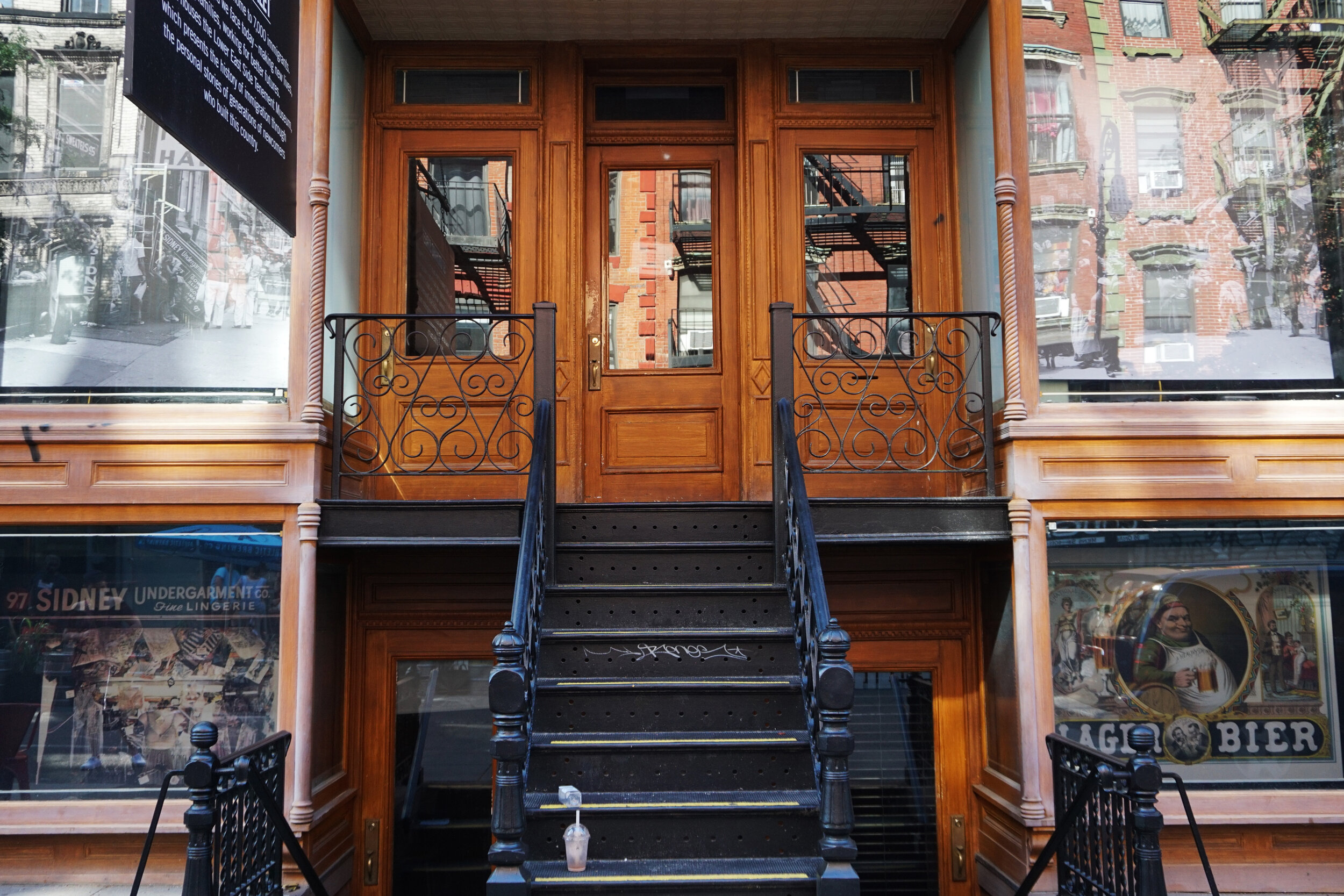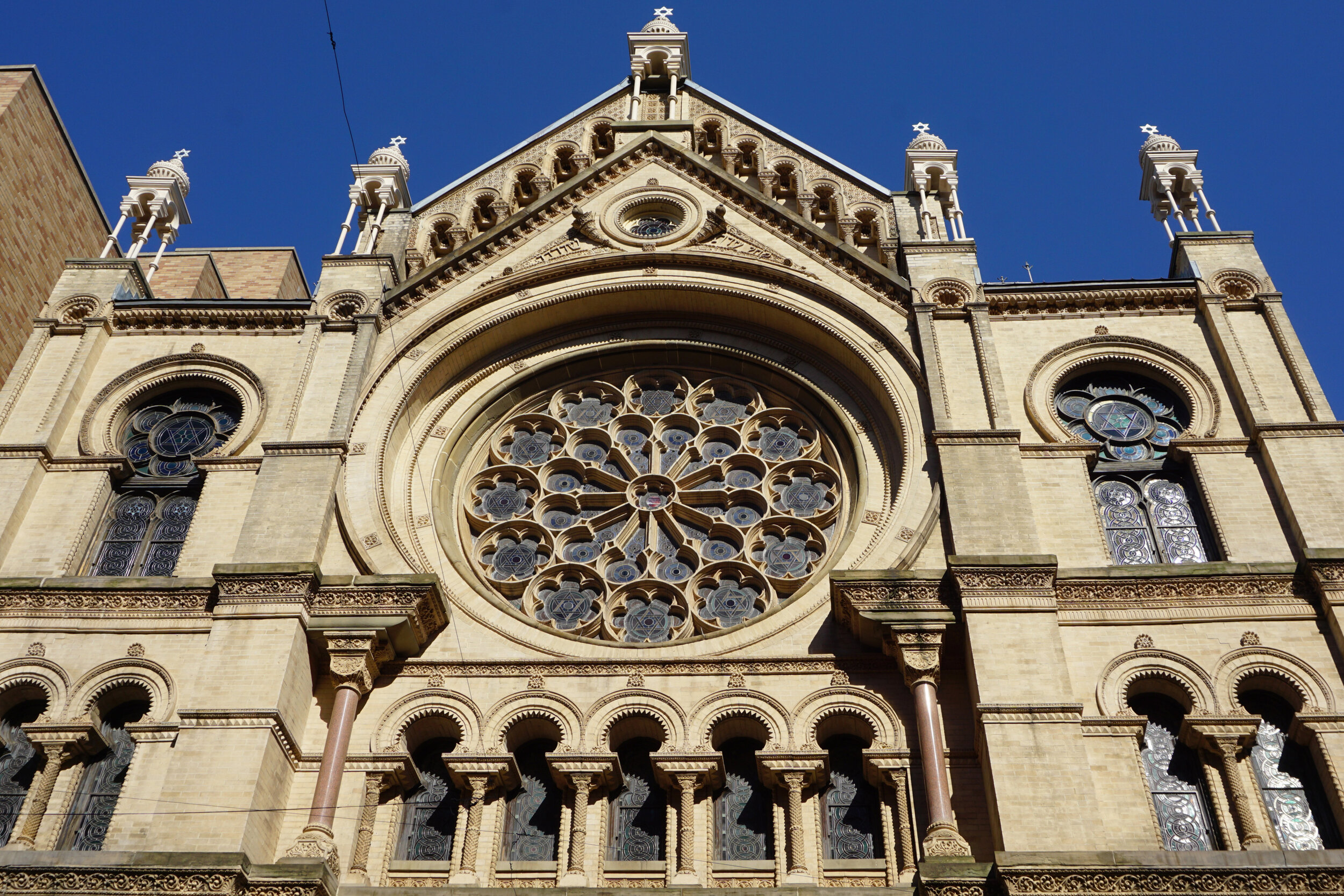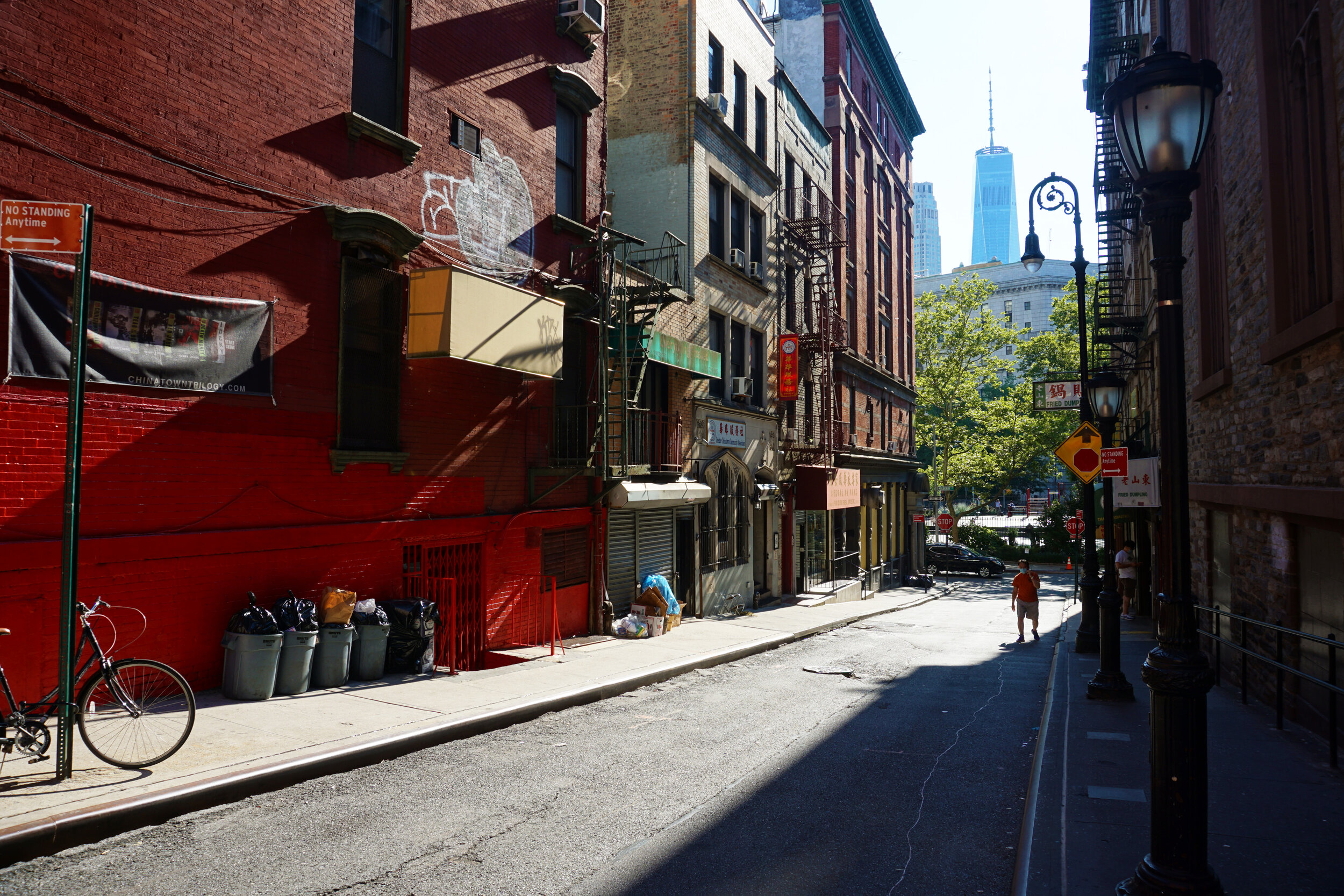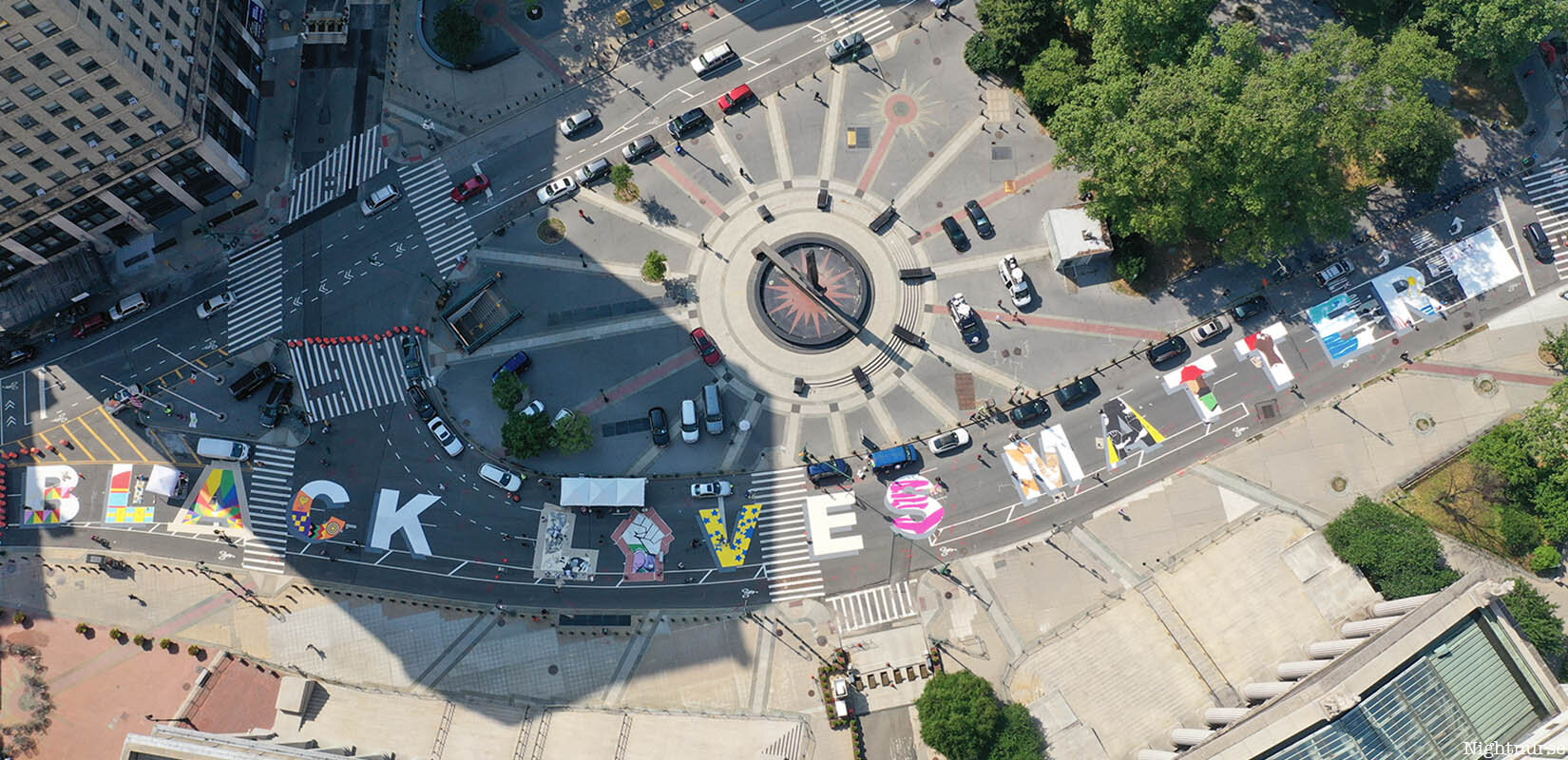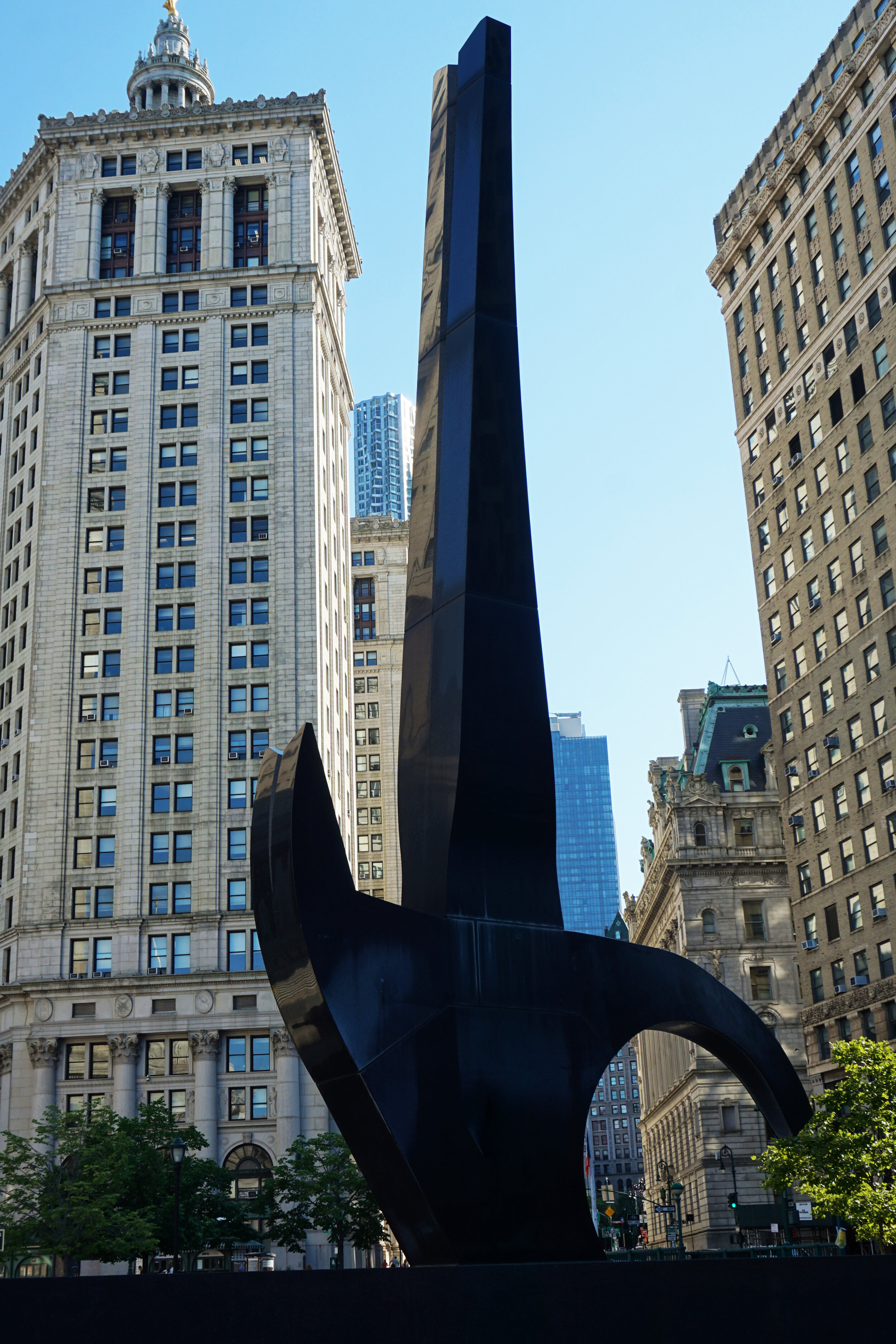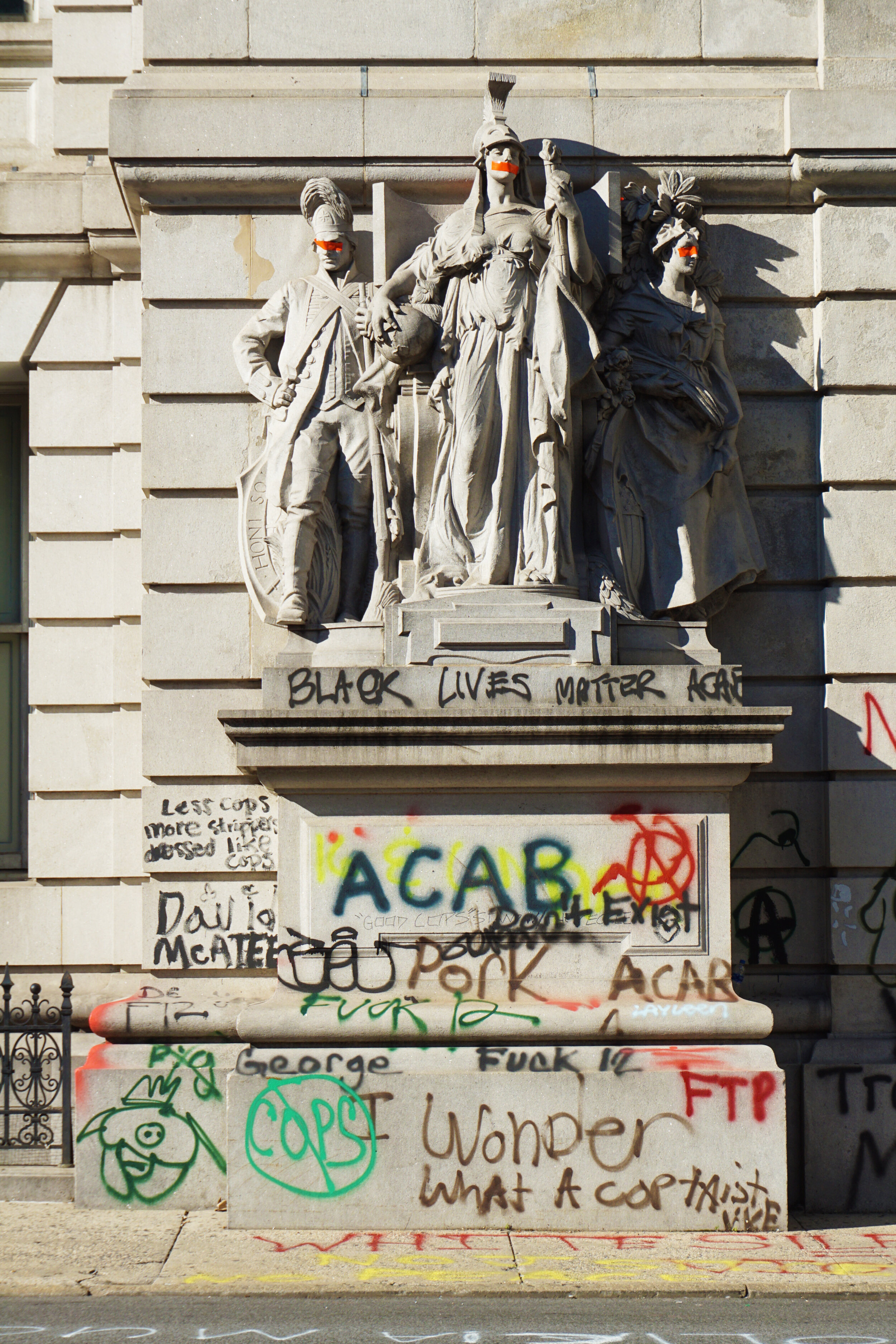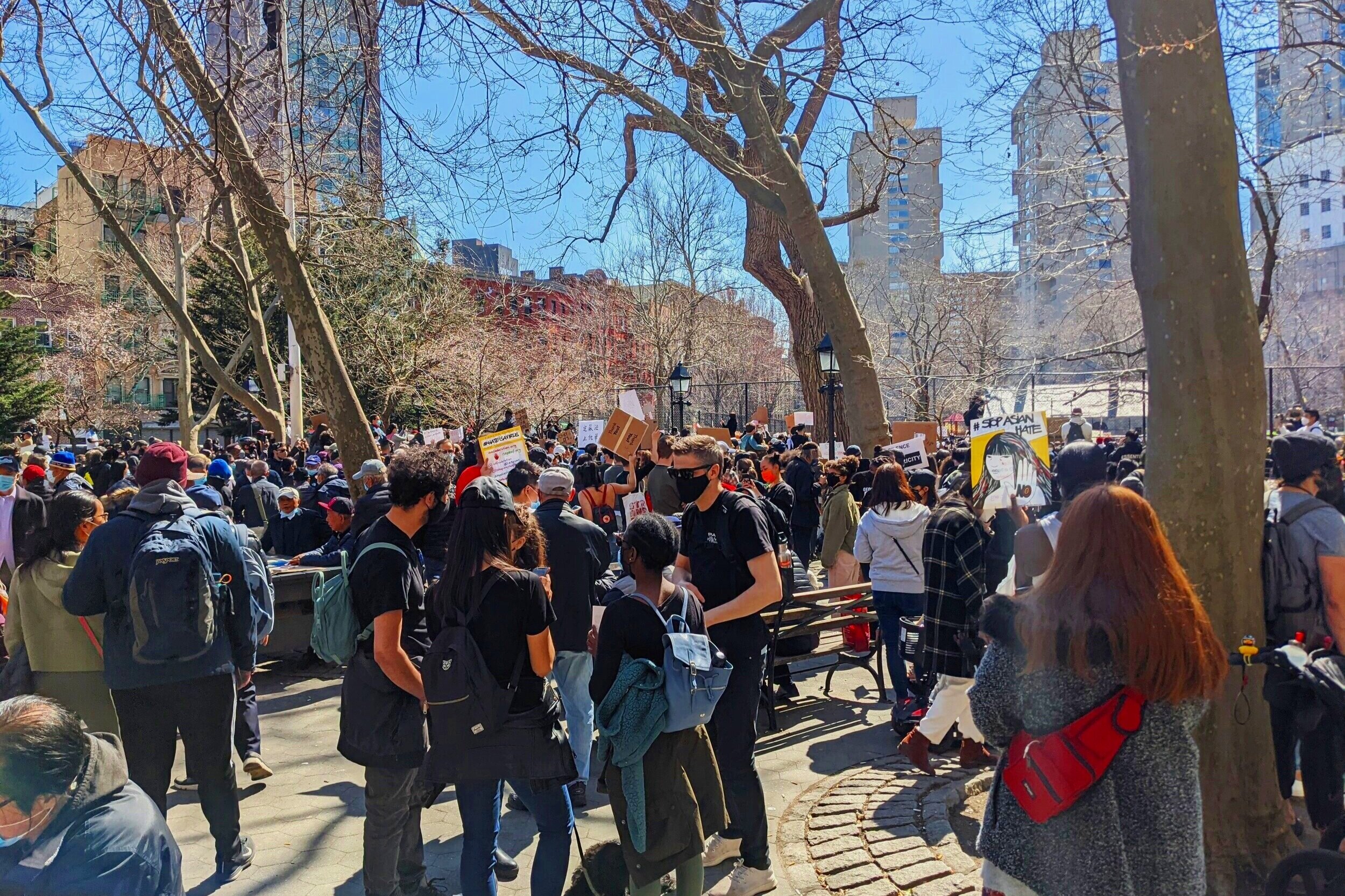the stolen history of new york
In honor of my third year as a New Yorker and in light of the ongoing demonstrations by the Black Lives Matter movement and discourse around the significance of historical monuments, I thought I’d write about New York’s stolen history—the hidden and lesser-known parts that are omitted from modern documentation but are vitally important to the city’s history. “Stolen” because these stories were often deliberately erased out of shame and the contributions of marginalized communities erased. But part of becoming a better and actively anti-racist society is grappling with the darkest parts of our history.
From the subtly racist, like the ubiquitous ice cream truck jingle (as it turns out, a lot of the things we took for granted, like ice cream trucks and square dancing in elementary school, are byproducts of white supremacy), to the blatant erasure of indigenous people, New York City is filled with small markers of its checkered history that you may not notice at first blush. But once you know what to look for, you see the signs everywhere.
In understanding all of this, I found a lecture called “Colonial Persistence in New York City” by Benoît Challand at A Night of Philosophy and Ideas last year particularly useful, the motif of which was “facing our present.” It speaks to a shared responsibility to acknowledge the horrors committed by the city as part of our collective identity. In order to move forward, we have to fight against our colonial legacy and highlight solidarity and reclaiming spaces created by marginalized groups.
Colonialism invokes a distant past of ugly European occupation, but many contemporary examples in living traits and practices remind us of its relevance. The official flag of New York City reveals an ignorance of its past—there’s this trope of New York City as a migrant city, but it had a violent past that is often disregarded altogether.
Of course, it is impossible to report on the city’s history without acknowledging the significance of the present moment. We are witnessing history being made right now, with the unprecedented COVID-19 pandemic and the aftershocks of George Floyd’s murder by police—the daily Black Lives Matter marches, the protest art adorning Manhattan institutions, and the Occupy City Hall encampment.
There is no question that marginalized communities, particularly the Black community, whose unpaid and often invisible labor built this country, are owed the respect they have been denied for decades. We can start by learning their stories.
“...the legacy of slavery and racism in the US is so deeply embedded that there are traces in even the most unlikely places.”
The Origins of Manhattan 🏙️
Our story begins with the island of Manhattan itself—it was originally occupied by the indigenous Delaware Tribe of Indians. The tribe calls themselves “Lenape,” pronounced “Luh-NAH-pay,” which means “the people,” and the name “Delaware” was given to them by an Englishman named Sir Thomas West, who misinterpreted part of the phrase “nal në ndëluwèn” (“that’s what I said”) as “Delaware.” The Lenape adopted this name to allow easy pronunciation for Westerners.
The name Manhattan comes from “Mannahatta,” which means “island of many hills.” The Lenape were asked to sign treaties relinquishing ownership of their land, but they believed that land belonged to all people and did not understand the concept of private ownership, and assumed they were granting the Europeans temporary use. They were also similarly tricked out of some of their land in the “Walking Purchase” of 1737. Today, they live mainly in Oklahoma, Wisconsin, and Canada.
According to The Mannahatta Project by the Wildlife Conservation Society, the island was once a remarkably diverse natural landscape that supported a rich wildlife community. Prior the arrival of Europeans in 1609, Mannahatta’s biodiversity per acre rivaled that of national parks like Yellowstone and the Great Smoky Mountains.
New York City is home to numerous ethnic enclaves, or neighborhoods dominated by one ethnicity, a result of its reputation as an immigration destination. These neighborhoods—like Chinatown, Spanish Harlem, and Harlem in Manhattan; Flushing in Queens; and Greenpoint and Crown Heights in Brooklyn—provide residents security and work and social opportunities, but often limit economic opportunities. An estimated 800 languages are spoken in New York City, making it the most linguistically diverse city in the world.
The Endangered Language Alliance, a small organization dedicated to preserve minority and indigenous languages, mapped 650 languages and dialects over 1,000 significant locations across the five boroughs, more than three times the number represented in the census. Around 40% of the languages represented are Asian, 27% are from Africa, 18% are from Europe, 14% from the Americas, and the remainder from Oceania and the Pacific.
Today, New York City remains a rich, living tapestry documenting a vibrant history, but much of that history is also being lost to gentrification and erasure of indigenous people and communities. But there’s so much out there that deserves to be shared.
Rivers Cosmogram 💫
Poet Langston Hughes published “The Negro Speaks of Rivers” at the age of 19, and seventy years later, on what would have been his 89th birthday, the Schomburg Center for Research in Black Culture buried his ashes in a small vessel underneath the polished terrazzo floor in a ceremony in his honor.
The installation, named Rivers is in the Langston Hughes lobby of the Schomburg Center, a part of the New York Public Library system.
Inspired by Hughes’ poem, the artist Houston Conwill made the memorial to honor Hughes and Arturo A. Schomburg, the library’s namesake. The cosmogram quotes lines from the poem: The final line—“My soul has grown deep like the rivers”—is in the circle’s center.
Lines flowing through the piece connect the Missouri and Puerto Rico—Hughes and Schomburg’s birthplaces, respectively—with Harlem. The lines and signs are a tribute to African ritual ground markings, “weaving a web of connections between people of diverse cultures and backgrounds, the past and the present.”
Harlem 🎷
Referred to as “the Black capital of America,” Harlem is one of the most diverse places in New York, home to African-Americans, African immigrants, and other ethnic groups like the Dutch, the Irish, Germans, Italians, and Jews.
Originally settled by the Dutch, Harlem was sparsely populated until real estate agent/entrepreneur Phillip A. Payton approached several Harlem landlords proposing that he would move black families into buildings in the 130’s of Central Harlem (he is often referred to as the father of “Black Harlem”). Black families arrived from Lower Manhattan, the South, and the Caribbean; in the onset of WWI, people were in search of opportunities and increased wages—in 1910, Harlem was 30% Black, but by 1930, it was 70% Black.
The cause of the Harlem Renaissance in the 1920s was the Great Migration, the movement of 1.6 million migrants moving from institutional racism in the South seeking a better life in the booming Northern economy, but its purpose was “to emphasize the aesthetic value of Black people,” elevating figures like Langston Hughes, Zora Neale Hurston, Billie Holiday, and Josephine Baker on a national scale. It inspired an explosion of cultural pride and artistic expression and is considered a turning point for Harlem and Black culture itself—because New York was such a hotbed of financial/cultural activity, the movement spread nationwide and set the stage for the Civil Rights Movement and contributed to the proliferation of jazz music in America. The idea was to use artistic creativity as a means to show America and the world that Black people are intellectual, artistic, and humane and should be treated accordingly.
In the 1960s, Harlem “was both stage and player” during the Civil Rights Movement, when religious and political leaders articulated the sentiments of the masses from street corners and pulpits throughout the community; figures like Malcolm X, Adam Clayton Powell Jr., Queen Mother Moore and Preston Wilcox used Harlem as a launch pad for political, social, and economic empowerment activities (it was later important to the development of the Women’s Rights Movement and the fight for LGBTQ rights as well).
Abdou Karim Samb, born in Senegal, arrived in New York in 1991 and moved to Harlem. He bought a taxi business with some Senegalese friends and feels at home in the Black community there.
“[In] Europe, not much black folks. I come Harlem, I feel it, I’m in Africa ... It doesn't look like Senegal but ... I dress like African almost every time ... Doesn’t mean I’m home. If I scared I dress like what they dress, but they know I fit in. And they, the people know me since, called young boys, they recognize [me].”
Spanish Harlem 🇵🇷
Named one of New York’s “New Hot Neighborhoods” by The New York Times, East Harlem is undergoing gentrification. Formerly Italian Harlem and presently known as El Barrio or Spanish Harlem, the neighborhood’s Latino roots are proudly displayed through its murals, shops, cafés, and museums, like El Museo del Barrio.
It has become more diverse since the early 2000s, with an emerging Chinese population due to gentrification pricing out many of Chinatown’s residents. Once primarily Puerto Rican, Latino New York City has grown to more than 2.4 million residents from all over Latin America. Latinos account for 29% of the overall population and for more than half of the Bronx.
Spanish speakers keep coming from countries like the Dominican Republic, Mexico and Ecuador, refreshing communities with their own cultural imprint and street-life vibe, in neighborhoods like East Harlem and Washington Heights in Manhattan, and Jackson Heights in Queens.
But as the city develops, rents increase, and the demographics change, longtime residents fear displacement and the loss of culture. But for now, you can still find markers of a thriving Latino presence following the Puerto Rican migration to New York after World War II: murals, mosaic art, cultural institutions, and a traditional restaurant scene.
Casa Latina Music 🎵
One of Spanish Harlem’s “hidden gems,” Casa Latina Music Shop has existed as a neighborhood institution for over 50 years and has been owned and operated by Vicente and Christina Barreiro for over 38 years.
This Spanish-Argentinian couple stocks a comprehensive selection of both popular and hard-to-find sounds, from salsa, bachata, and meringue to reggaeton and vintage ballads. They also carry an extensive selection of instruments like congos, djembes, and classical Spanish guitars and live performance DVDs of stars like Marc Anthony and legendary musical pioneer Tito Puente, for whom Tito Puente Way is named.
Seneca Village 🏘️
Before the creation of Central Park, the landscape along the park’s perimeter from West 82nd to West 89th Street was known as Seneca Village from 1825 to 1857. There are several different theories as to how Seneca Village got its name: from Roman philosopher Seneca the Younger, whose book Moral Epistles was often read by African-American activists and abolitionists; after the Seneca nation of Native Americans; a portmaneau of anti-Native American and anti-black slurs; after the West African nation of Senegal, the origin country of many of its residents; or from a codeword on the Underground Railroad.
According to the Seneca Village Project, it was Manhattan’s first significant community of African-American property owners and by the 1840s, it had become a multi-ethnic community comprised of two-thirds African-Americans, one-third Irish immigrants, and a small number of individuals of German descent.
Vox’s “Missing Chapter” series, by producer Ranjani Chakraborty, which revisits hidden, underreported moments in history to give context to the present. “The lost neighborhood under New York’s Central Park” reveals that slavery in New York was not ended all at once but over a period of about 30 years. As more free Blacks joined the workforce, racial tensions rose and violence ensued; it was extremely dangerous in the industrial, established Lower Manhattan for free Blacks. Seneca Village served as an escape for its residents away from the racism and unhealthy conditions they faced in other parts of Manhattan.
Andrew Williams, a 25-year-old African-American shoeshiner, purchased three lots uptown (what would become Seneca Village) and the Black community followed him, seeking an affordable safe haven. Seneca Village offered not only an escape from the violence and racial discrimination of the rest of the city, but the right to vote as well, since Black men could not vote unless they owned property.
In 1855, the New York State Census reported approximately 264 residents—laborers, domestic workers, waiters, and shoemakers—as well as three churches, a school, and several cemeteries. But in the early 1850s, the city began planning a large municipal park to “counter unhealthful urban conditions and provide space for recreation,” and in 1853, the New York State Legislature enacted a law that set aside 775 acres of land in Manhattan—from 59th to 106th Streets, between Fifth and Eighth Avenues—to create the country’s first major landscaped public park.
The City acquired the land through eminent domain, the law that allows the government to take private land for public use with compensation paid to the landowner. This was a common practice in the 19th century, and had been used to build Manhattan’s grid of streets decades earlier. There were roughly 1,600 inhabitants displaced throughout the area. Although landowners were compensated, many argued that their land was undervalued. Ultimately, all residents had to leave by the end of 1857. Research is underway to determine where Seneca Village residents relocated—some may have gone to other African-American communities in the region, such as Sandy Ground in Staten Island and Skunk Hollow in New Jersey.
After its residents were displaced, all traces of Seneca Village were lost to history, but scholars and archeologists have worked since the 1990s to recover its remains and report on its history. In 2011, a group called the Institution for the Exploration of Seneca Village history conducted an excavation that uncovered stone foundation walls and thousands of artifacts from the site that offer valuable clues to understanding the settlement.
The Catacombs of Old St. Patrick’s Cathedral ⛪
St. Patrick’s Cathedral is home to some of the only existing catacombs in the United States. The cathedral is a historic landmark; the Gothic Revival-style cathedral was originally a refuge for newly-arrived immigrants—first the Irish, then Italians, Latinos, and Asians.
As Catholics gained financial status and business, political, and cultural influence, the elite were entombed in the catacombs within the cathedral’s crypts. The catacombs display fine examples of 19th century art and innovation, such as original Thomas Edison light fixtures and tilework by notable engineer and builder Rafeal Guastavino, who provided tilework to other New York landmarks like City Hall Station and Ellis Island.
The catacombs remained exclusive to the clergy, workers, and the family of the entombed for over 200 years, but were opened to the public in February 2017. Now, visitors can book candlelight tours through Tommy’s New York (when not in a global pandemic) and learn about the rich history of Catholic New York hidden in the dark halls.
Memorial to Victims of the Injustice of the Holocaust ✡️
Nestled in the marble walls of the Appellate Division Courthouse facing Madison Square Park is a blink-and-you’ll-miss-it tribute to the victims of the Holocaust: a small-scale model of the Auschwitz I concentration camp in German-occupied Poland during WWII that bears the hauntingly pertinent message: Indifference to injustice is the gate to Hell.
It was designed by American ecofeminist artist and sculptor Harriet Feigenbaum, who won the 1988 design competition after Judge Francis T. Murphy, presiding justice of the New York State Court of Appeals, conceived the idea of creating a Holocaust monument at the site, and sculpted a replica of an aerial photograph of Auschwitz taken by American planes as they bombed German oil factories nearby on August 25th, 1944. This was significant as well—the use of the photograph was an indictment of the United States’ failure to bomb Auschwitz.
Repertorio Español 🎥
In the heart of Murray Hill is Repertorio Español, a tiny movie theater that was founded in 1968 by producer Gilberto Zaldívar and Artistic Director René Buch. Its goal was to introduce the best of Latin American, Spanish, and Latino theater to a broad audience in New York City:
Spanish masters like Calderón, Lope de Vega and García Lorca; renowned playwrights from Latin America; and the growing body of American writers who capture the Latino experience in the United States, are all at home in Repertorio’s programming.
It moved to its current location in 1972, and the critical success of the company’s first production, Who’s Afraid of Virginia Woolf? helped Repertorio Español make a name for itself in both English and Spanish entertainment.
In 1984, the company began to present and commission new plays by Hispanic American playwrights, and in 1991 it debuted an infrared simultaneous translation system that provides non-Spanish-speaking audiences the opportunity to enjoy the company’s productions.
Our Lady of Guadalupe at St. Bernard’s Church 🙌
The Church of Our Lady of Guadalupe was founded in 1902, the first parish in New York City to serve the burgeoning Latino population, at a time when the Archdiocese did not include many priests that could speak Spanish. The brownstone location was chosen due to the many Spanish and Mexican residents in the area, and it was dedicated to Our Lady of Guadalupe, patroness of the Spanish-speaking everywhere. The church was the first alter that Latinos could truly call their own.
Today, vendors set up stands early outside the church on Sundays, when three of five services are in Spanish, hawking tacos, champurrados (a warm, thick chocolate beverage popular in Mexican culture), and religious trinkets.
The Stonewall Inn 🌈
The Stonewall Inn, the site of the 1969 Stonewall riots, widely considered to be the single most important event leading to the gay liberation movement and the modern fight for LGBTQ rights in the United States, is known as the birthplace of Pride.
From the plaque adorning its walls:
The events that began at the Stonewall Inn in 1969 marked a monumental change for lesbian, gay, bisexual, transgender, and queer (LGBTQ) Americans. Stonewall, which occupied 51-53 Christopher Street, was a gay bar that was raided on June 28, 1969. Patrons and a crowd outside resisted, and confrontations continued over the next few nights in nearby Christopher Park and on adjacent streets. This uprising catalyzed the LGBTQ civil rights movement, resulting in increased visibility for the community that continues to resonate in the struggle for equality.
On June 23, 2015, the Stonewall Inn was the first landmark in New York City to be recognized by the New York City Landmarks Preservation Commission on the basis of its status in LGBT history, and it was named a New York historic site and the first U.S. National Monument dedicated to the LGBTQ rights movement.
Stonewall 50 - WorldPride NYC 2019, commemorating the 50th anniversary of the riots, was the largest international Pride celebration in history, with a 12-hour parade including 150,000 participants and five million spectators attending in Manhattan alone.
Gay Liberation Monument 👬
The sculptures known as Gay Liberation are “profound in their simplicity,” showing two same-sex couples enjoying a day in the park. The normality of it itself is revolutionary—American pop artist George Segal who sculpted it chose to depict the couples in relaxed, affectionate poses as opposed to the hyper-sexualized stereotypes portrayed in media at the time. For members of the community, “such a show of openness and comfort was denied to them for so long.”
It was commissioned in 1979 to commemorate the 10th anniversary of the Stonewall riots and completed in 1980, the first piece of public art dedicated exclusively to LGBTQ rights, and has since become part of the Stonewall National Monument.
It was controversial from its inception; gay rights opponents blocked its installation on public land in New York City and it was instead welcomed by Madison, Wisconsin. But in 1992 the statues found their way home in Christopher Park in the West Village, right next to the historic Stonewall Inn.
Washington Square Park 🏞️
Washington Square Park today serves roughly the same purpose today as it did for the Lenape 500 years ago. The area was a clearing that functioned as a community spot, marketplace, and cultural hub where the Lenape gathered to play games and music.
In 1624, the Dutch West India Company established a trading outpost and freed a number of African-born slaves, granting them plots of land to farm in return for a portion of their crops, some of which are now the park after free Black farmers lost the rights to their land under English rule.
The park is also home to the Hangman’s Elm, a 110-foot-tall English Elm estimated to be over 330 years old—references to the “Hangman’s Elm” go all the way back to the 19th century, and it is the supposed site of many executions by hanging during the Revolutionary War.
There are no public records to confirm any of these hangings, however historians do know that this area of Washington Square Park was once a burial ground for slaves and those who died of yellow fever.
There has been at least one confirmed execution in this area, about 500 feet from the elm—that of Rose Butler in 1820, a slave accused of arson. During a soil testing project in 2008, archaeologists found four mostly intact skeletons. Many others have been found in the park, and left in the ground out of respect.
Next time you wander by, take a look up through the branches and back in time. Hangman’s Elm reminds us that even as we sit below the shade of an a beautiful old growth tree in Washington Square park, we’re surrounded by hundreds of years of history— much of it sinister.
Astor Place 🌳
Today’s Astor Place was an even larger Lenape gathering space. In the 16th century, Mannahatta was home to three distinct Lenape groups: Canarsee (for whom Canarsie in Brooklyn is named for), Sapohannikan, and Manhattan. Each group spoke a different language, and Astor Place was their central meeting point, called “Kintecoying,” or “Crossroads of Three Nations,” where three major trails intersected.
The tribes would meet for trading, spiritual ceremonies, tribal councils, and games. In 1870, the influential Teton Sioux leader Red Cloud appealed to the public at this very location, from the stage at Cooper Union, continuing a centuries-old tradition of Native American oratory.
It was later reconstructed and named Art Street, and acquired by John Jacob Astor, one of the wealthiest men in New York at the time, and renamed Astor Place after his death in 1848.
In the mid- to late-19th century, the area was home to some of the richest New York families like the Astors, the Vanderbilts, and the Delanos. Thanks to their mansions and a revitalization project, the area became a fashionable upper-class residential district.
La Plaza Cultural 🌻
La Plaza Cultural, or La Plaza Cultural de Armando Perez Community Garden, is a small public space hidden in the Lower East Side, for beauty and community and art, like puppet shows and dance performances. It was originally a garbage dump, but the plaza was the brainchild of local activists and a Latino group that cleaned it up and turned it into a community outlet in 1976. Now, it continues to be a public space for community and cultural traditions amidst the noise of the city.
97 Orchard Street 🧳
A historic tenement that was home to an estimated 7,000 immigrants from over 20 nations between 1863 and 1935. The five-story tenement was built with 22 apartments, each about 325-square-feet and each consisting of three rooms. Although living in tiny quarters, the families who called 97 Orchard Street home came to America—and New York City’s Lower East Side—in search of a better life and opportunities.
The people of 97 Orchard Street were first counted in the U.S. Census in 1870. It was the first census to ask questions related to immigration and place of birth, which was significant because all of the tenement’s residents were either immigrants or children of immigrants.
Little Guangdong-Hong Kong 🇭🇰
Mott Street is considered Chinatown’s “Main Street,” filled with restaurants, tea houses, fruit vendors, and trinket shops. But the 1970s was the most violent gang-related period in Chinatown; there was a lot of tension between gangs—Chinese, Italian, and Taiwanese, and Mott Street was highly prized territory.
The Ghost Shadows controlled Mott Street in the 1970s, and later affiliated with the On Leong Tong (also called the On Leong Chinese Merchants Association), the wealthiest and most influential gang in Chinatown. During the 1980s and 1990s, the gangs ran a protection racket, in which shopkeepers paid the gangs a protection fee. The negotiations “often involved drinking tea and were often very peaceful.” Other gangs included Chung Yee, Liang Shan, the Flying Dragons, the White Eagles, and the Black Eagles.
Today, this portion of Chinatown is a largely Cantonese community, because it was originally a central point of immigration for Hong Kong immigrants, and is also a prominent business district and tourist hotspot. With an estimated population of 90,000 to 100,000 people, Manhattan’s Chinatown is also one of the oldest ethnic Chinese enclaves outside of Asia.
The Chinese Exclusion Act lasted from 1882 to 1943, and is to date the only non-wartime federal law that excluded people based on nationality. It was a reaction to rising anti-Chinese sentiment, as Chinese laborers would work for far less money in much worse conditions than white laborers contributing to the myth of “stealing jobs” and refusing to assimilate “properly.” The law forbid naturalization of any Chinese in the United States, barred the immigration of any Chinese not given a special work permit, and prohibited the immigration of the wives and children of Chinese laborers living in the United States. It was finally lifted during WWII when it was politically inconvenient, but remains a shameful mark on the country’s history.
But despite the racism they faced, Chinese immigrants made Chinatown into a vibrant center of food and culture that we still recognize today.
Irish Hunger Memorial 🇮🇪
Designed by artist Brian Tolle, landscape architect Gail Wittwer-Laird, and architecture firm 1100 Architect, the Irish Hunger Memorial is a small park at the corner of Battery Park City dedicated to victims of the Great Irish Famine, in which over one million people starved to death as a result of British policies that prioritized the exportation of profitable foods between 1845 to 1852. It was completed in 2002 and consists of a potato field, stone walls, and the ruins of a 19th-century cottage. The winding path leading to it is marked with 32 rocks, each engraved with the name of an Irish county, and landscaped with stones, soil, and native vegetation transported from the western coast of Ireland. It is a reminder of both the famine and that hunger today is often the result of lack of access to land.
Museum at Eldridge Street Synagogue 🕍
Built in 1887, America’s oldest Eastern European synagogue “provided the immigrants of crowded Lower East Side tenements a space of sanctuary.” Between 1881 and 1924, over 2.5 million Eastern European Jews immigrated to the United States, and almost 75% of the population initially settled on New York’s Lower East Side—an area known as the “Jewish Plymouth Rock” at the turn of the century.
When Eldridge Street opened its doors it was a declaration of the community’s newly found religious freedom, designed by architects Peter & Francis Herter: “Light poured in from 67 stained glass windows, Stars of David adorned the outside facade, and the main sanctuary hosted an exuberant Moorish-style interior with soaring ceilings.”
The synagogue flourished for 50 years, but with immigration quotas placed on Ellis Island in the 1920s, membership slowed and after WWII, many Lower East Siders left for the suburbs and the main sanctuary was used less and less. In the 1980s, after decades of neglect, a New York University professor rediscovered the sealed sanctuary. Historian Roberta Brandes Gratz established the Eldridge Street Project, which designated the synagogue a National Historic Landmark and began a 20-year, $20 million restoration. It was finally completed in December 2007 in time for the synagogue’s 120th anniversary and in 2010, the museum installed a new stained glass window created by artist Kiki Smith and architect Debora Gans.
Today, it is the only remaining marker of the great wave of Jewish migration to the Lower East Side open to the public. The Museum at Eldridge Street was founded to restore and interpret its home, with exhibits, tours, cultural events, and educational programs to “tell the story of Jewish immigrant life, explore architecture and historic preservation, inspire reflection on cultural continuity, and foster collaboration and exchange between people of all faiths, heritages and interests.” It is a powerful symbol of the historical and cultural contributions of generations of immigrants in America.
The synagogue’s website reads:
At the Museum at Eldridge Street we:
Welcome people of all faiths and cultures.
Teach and reinforce tolerance.
Believe diversity is our strength.
Believe openness and exchange makes us stronger.
Celebrate the special role that the Eldridge Street Synagogue plays in making Jewish life and immigrant culture available to all visitors, whatever their background.
Greetings From Chinatown Mural 🐉
This mural was a community effort that came to fruition in 2014, designed by artists Victor Ving and Lisa Beggs. Ving had asked several times for permission to paint the blank wall, but had always been brushed off, and finally asked a community affairs police officer named Vincent Cheung for support, and the community board finally agreed:
I come from a background of painting graffiti for many years and I wanted to use my skills to do something positive for the community that I lived in. I decided to incorporate locally-relevant imagery into the letters that spelled out ‘Chinatown’ in all caps. We had support to cover supplies from local businesses like Chinatown Ice Cream Factory, Nom Wah and Tsing Tao beer.
The mural is supposed to be a “a modern-day postcard to share with friends and family,” and each letter symbolizes and important piece of Chinatown culture. From left to right—C: Maneki-neko cat, H: Manhattan Bridge, I: Chinatown Ice Cream Factory, N: F train and some trash, A: box truck/tribute to Jade BTM, T: Tsingtao Beer, O: Bootleg Louis Vuitton on Canal St., W: Fung Wah Bus (on fire), N: Nom Wah Dim Sum Parlor.
Little Fuzhou 🇨🇳
Underneath the Manhattan Bridge, the stretch of East Broadway that passes through Two Bridges and the Lower East Side is sometimes known as “Little Fuzhou.”
Originally, the area was a large population of Jewish immigrants (thus, the existence of the Museum on Eldridge Street Synagogue), and at one point home to Puerto Ricans and African-Americans. But in the 1960s, an influx of immigrants from Hong Kong and Vietnam arrived and the Puerto Ricans, Jews, and African-Americans moved out.
Beginning in the 1980s and especially in the 1990s, the neighborhood became a prime destination for immigrations from Fuzhou, China. New York City is home to between 150,000 and 200,000 Fuzhounese Americans, who exerted a large influence within the Chinese restaurant industry across the United States—the majority of which are in New York.
In 2013, approximately 19,645 Chinese from Mainland China legally immigrated to the tristate area, greater than the combined totals for Los Angeles and San Francisco, the next two largest Chinese American gateways.
Nom Wah Tea Parlor 🥟
The oldest dim sum restaurant in Chinatown is Nom Wah Tea Parlor, tucked into the corner of Doyer Street, or what used to be Chinatown’s “bloody angle,” a former battleground for gang warfare between the Tong and Leong gangs (it was estimated that more people died violently at this location than at any other street intersection in the United States). Nom Wah celebrates its centennial this year, having opened in 1920 by Ed and May Choy and survived Prohibition, wars, 9/11, and now the coronavirus.
In 1950, Wally Tang, then 16, immigrated over from China and got his first job at Nom Wah, working his way up and eventually graduating to running the entire restaurant by the time he was 20. In 1974, Choy retired and sold the entire restaurant to Tang, his employee of 24 years.
Nom Wah sold dim sum and baked goods from the ‘50s to the ‘80s, famous for their mooncakes which attracted crowds out the door and were a staple for any Chinatown resident celebrating the Mid-Autumn Festival. In the ‘80s, competition increased as more bakeries popped up around Chinatown, and Nom Wah’s pastry business declined. But the parlor remained a kind of social club for the network of dim sum chefs in the neighborhood—people would gather to eat, drink tea, and play cards.
The current owner, Wally’s nephew Wilson Tang, took ownership over the restaurant in 2010, and decided to make some changes. He decided to renovate the restaurant, but his uncle insisted that they never fully close, as he wanted to ensure that the door would always be open to those who wanted to drink tea, play cards, or eat cookies. Most of the renovations were in the kitchen, where much of the equipment hadn’t been updated since the 1950s, but the front of the house remained the same in its antique charm: red vinyl booths, antique fans, Art Deco tables, 1930s countertop, and vintage cash register.
In the midst of gentrification, Nom Wah has stayed mostly the same, as the Tang family has worked hard to preserve it as a piece of Old New York while simultaneously trying to tailor its work culture to fit into the present day. Wilson Tang has said that he wants to transition into a “fast-casual concept,” and since then has opened locations on the Lower East Side, in Nolita, and in Philadelphia. It remains one of Chinatown’s oldest existing institutions and cultural landmarks.
Wing on Wo & Co. 🧧
Wing on Wo & Co. is Chinatown’s oldest shop—it once was a general store that sold everything from postage stamps to canned goods, but is now a specialty porcelain store owned by Mei Lum, a fifth-generation store owner.
In 1920, Walter Eng and other community members purchased the building at 26 Mott Street, the shop’s current location. After his death in 1964, his daughter Nancy Seid took over the store exclusively selling porcelain sourced through Hong Kong, and a family tradition was born.
For five decades, every piece in Wing on Wo’s extensive collection of dishes and teaware was handpicked by Seid on annual sourcing trips to Hong Kong. The intricate pattern work is distinctive from contemporary copycats, and Lum’s current vision for the shop’s inventory is to preserve its history and tradition of hand-painted pieces, while still appreciating porcelain’s place as an art form in the 21st century.
Teacups and tea jars are among the store’s best sellers, and Mei and Nate have been seeking out new hand-painted designs in Jingdezhen, China’s “porcelain capital.” Looking at their latest haul, you can see how W.O.W.’s fifth-generation shopkeeper is paying homage to her grandmother’s aesthetics. In addition to contemporary work made by emerging Chinese artists, she’s chosen brightly colored, updated takes on traditional flowers, fruits and dragons that hark back to Nancy’s decades-old collection.
Inspired by the legacy of her family’s business and the influence of rapid development and gentrification on Chinatown, Lum established the W.O.W. Project to encourage “intergenerational dialogue and action.” The community-based initiative explores the rich history of Chinatown and aims to “reinvent, preserve, and encourage Chinatown’s creative culture and history through arts, culture, and activism.”
A statement on the project’s website reads:
Since much of our work is place-based, we would like to acknowledge our position as settlers, as Manhattan’s Chinatown is on occupied Lenape land. We have to acknowledge the layers of displacement and dispossession that have taken place—specifically structures of settler colonialism that perpetuate ongoing violence towards Indigenous people—and acknowledge indigenous people’s ongoing resistance to settler colonialism.
The shop is currently closed to the public because of COVID-19, but its presence as a cultural institution is acknowledged by the community.
You can help preserve this historic piece of Manhattan Chinatown by donating to the W.O.W. 4 Year Anniversary Programs & Fundraising Campaign here.
Five Points Manhattan 🧭
Once known as “the most dangerous neighborhood in New York City” and located within what is now Chinatown, Five Points “gained international notoriety as a densely populated, disease-ridden, crime-infested slum that existed for over 70 years,” and is known as “the first slum in America,” home to gangs like the The Bowery Boys, The Dead Rabbits, The Short Tails, the Montgomery Guards, and the Plug Uglies (all of which actually inspired Martin Scorcese’s Gangs of New York) and alleged to have the highest murder rate of any slum in America.
This district of Manhattan became “the original melting pot,” a center of settlement for the poorest and least fortunate immigrants—Irish, Italian, and Eastern European—and freed Black slaves. Mosco Street is the last remnant of the infamous neighborhood—it was once Park Street, and in the mid-1800s it was Cross Street, which cut through the middle of Five Points.
Following loosened immigration restrictions in China and the wave of immigration in the 1870s, the enclave around Five Points was estimated to have from 200 to as many as 1,100 members by 1880. The Chinese Exclusion Act caused an abrupt decline in the Chinese population, but the Immigration and Nationality Act of 1965, which barred discrimination against immigrants by nationality from American immigration policy, caused the it to skyrocket again. In 1992, New York City officially began providing language assistance for electoral materials in Chinese given that the population had reached critical mass.
Black Lives Matter Mural ✊🏿
The 600-foot-long Black Lives Matter mural, in response to police brutality and the shootings of unarmed Black Americans, is located at Foley Square on Centre Street, between Reade and Worth Streets in Lower Manhattan.
It was led by the office of Manhattan borough president Gale A. Brewer, under the guidance of Black Lives Matter of Greater New York, and coordinated by designers of color from WXY, an architecture and urban planning firm based in New York. Originally conceived in early June for completion on Juneteenth, the team hit a roadblock when it was discovered that one of the companies selected to help had workplace practices that conflicted with the movement’s anti-racism stance.
Each of the three words of the mural was designed by a different artist—Sophia Dawson, Tijay Mohammed, and Patrice Payne—and painted on the street in partnership with the local muralist collective TATS CRU and a youth arts nonprofit called Thrive Collective. All parties involved were selected for their alignment with the anti-racist principles of the Black Lives Matter movement, and the mural was finally completed on July 3rd, 2020.
The project was supported technically and financially by mostly white architecture and design firms, which the creators view as an important step toward allyship.
This kind of process may represent “a new way of engaging in the design of spaces within communities,” according to WXY architectural designer Jhordan Channer. Perhaps in the future we’ll have fewer statues of slaveowners and colonizers and more works of art that represent the people of cities.
Triumph of the Human Spirit 👣
Designed by Lorenzo Pace, this abstract sculpture is located close to the African Burial Ground National Monument in downtown Manhattan. Its form is inspired the art of the Bambara people, a Mandé ethnic native to West Africa, primarily southern Mali, Guinea, Burkina Faso, and Senegal. The boat-like part alludes to the “Middle Passage” of the slave trade, the part of the voyage across the Atlantic to the West Indies, or what is now the Caribbean.
Following an extensive archaeological survey, a portion of the African burial ground was preserved as a National Historic Landmark. The sculpture represents “freedom and endurance,” and was designed with Pace’s ancestry in mind; the five granite paving bands ending in large bronze relief medallions each symbolize an epoch in the history of Foley Square. Pace’s work focuses on themes of voodoo, African iconography, and urban issues, and his work has been exhibited at the Smithsonian Institution and the Museum of Contemporary Art in Los Angeles.
African Burial Ground Monument 🏺
Africans were brought to the Dutch colony of New Amsterdam (later New York), some enslaved and some free Africans descended from slaves freed by the Dutch West India Company. African funerals were banned by colonial New York laws, and so Africans and their descendants held burial ceremonies in a cemetery outside of the city. As the city expanded, the burial ground was closed in 1794 and divided into lots for sale; the land was filled in and buildings were constructed on top. For almost two centuries, the African Burial Ground was nearly forgotten.
The rediscovery of the burial ground and remains of 419 human skeletons in 1991 revealed that Africans and their descendants buried loved ones with dignity and respect in the 17th and 18th centuries, wrapped in shrouds, buried in full-sized coffins, and given small tokens like beads, cowry shells, and cuff links.
The African Burial Ground covered more than two acres, and it is estimated that as many as 10,000 men, women and children were interred in the graveyard that was nestled between two hills. Residents of African descent in New Amsterdam and later New York were enslaved from the city’s modern birth in 1625 to their emancipation in New York State in 1827. The burial ground itself was closed in 1794, and later subsumed by centuries of development, as the city’s growth advanced northward from the Financial District of Lower Manhattan.
According to the National Park Service, “Rediscovery changed the theoretical, historical, and financial concepts of African’s accurate contributions and inclusive narratives of colonial New York’s sustainability.”
Occupy City Hall ⛺
Right now, the whole world is watching the United States, both because of the coronavirus and the Black Lives Matter, and while the national and global media has largely ignore the sustained activism in favor of violence (i.e. Portland), the movement soldiers on.
On June 23rd, supporters of the Black Lives Matter protests set up camp in the park across from City Hall. Around 100 people camped out overnight, to put pressure on Bill de Blasio and the City Council to cut NYPD funding in the city’s next budget allotment. It was designated an “autonomous zone,” filled with protestors, pop-up shelters, protest art, homemade meals, and a “people’s bodega.” It was more than just a physical encampment—it was a community.
And it’s an expression of the greatest freedoms of our society and an indictment of the racial injustice in our country, just as Occupy Wall Street movement was a protest of economic inequality. Someday, this will be written about in history books. And as we look at history being made, we have the opportunity to decide who we’re going to be as a society. When I look at the statues meant to represent justice outside of city hall with orange tape over their mouths, graffitied with “ACAB” and “Black Lives Matter,” all I can think about is the way that these spaces are being reclaimed by the people whose labor and marginalization have built this city. It’s quite literally the voice of the people finally being acknowledged, and that’s a beautiful thing.
The community was peaceful and vibrant, a microcosm of New York City—people would sit together, share meals with one another, play music together. I saw a tweet of Broadway dancers performing. The fact that people are willing to come together in the middle of a global pandemic and risk comfort and safety in the name of justice is nothing short of admirable.
But as of last week, on July 22nd, the encampment was attacked by police and torn down. I think if anything, the city, de Blasio, and the NYPD have shown us exactly who they are and who they are willing to be. And we should keep that in mind when the question is asked: Who do we trust to protect and serve us?
Park Row 🚬
The first notable example of Chinese immigration to New York City was Ah Ken, a businessman that arrived in Chinatown around 1858. He is believed to have started the wave of Chinese settlement in Lower Manhattan; he resided on Mott Street and reportedly rented rooms to Chinese immigrants. Eventually, he earned enough to open a successful cigar shop on Park Row, around which the modern-day Chinatown was built.
In 1965, the Immigration and Nationality Act was passed allowing more immigrants from Asian countries. This increased Chinatown’s population significantly. In turn, the diversity among the occupants also increased. It began as a place with primarily Taiwanese speaking people. In the 60’s, that grew to encompass Cantonese and Mandarin people as well. Eventually, the population grew so dense that it began to expand into Brooklyn and Queens. While those areas still remain, Chinatown in Manhattan is still more of an active tourist destination
The Chinese population was not treated kindly; according to author Alvin Harlow in Old Bowery Days: The Chronicles of a Famous Street, Ah Ken was “probably one of those Chinese mentioned in gossip of the sixties as peddling ‘awful’ cigars at three cents apiece from little stands along the City Hall park fence—offering a paper spill and a tiny oil lamp as a lighter.”
Site of the New York Slave Market 🚢
Now a luxury condominium building, 74 Wall Street was once the site of an auction block for the sale of enslaved Africans. The New York slave trade began with 11 West African captives shipped to New Amsterdam in 1626, and by the mid-18th century, approximately one in five people living in New York City was enslaved, and half of Manhattan households had at least one slave.
The corner of Wall Street and Pearl Street was an open-air market that could hold up to 50 men and operated from 1711 to 1762. Slaves were unloaded from ships in the nearby East River, and New York positioned itself as a port city where agricultural goods grown by slaves in the South were financed, refined, packaged, and shipped around the world. Atlas Obscura notes that the New York Stock Exchange “owes its startup capital to the slave economy,” and the American economy as a whole was built on a legacy of slavery.
The building was established as The Seamen‘s Bank for Savings in the City of New York in 1829 (hence the sailors, mermaids, seahorses, and other nautical motifs engraved in the stone archway), and was later acquired by Chase. Today, little evidence of the New York slave market remains; the bronze plaques on the building announces the site as the temporary home of “distinguished American” Edward Livingston, former U.S. Secretary of State and mayor of New York City, whose family owed their political prominence to the wealth generated from the slave trade, but makes no mention of the horrors committed on the same land.
In 2015, a small plaque acknowledging New York’s municipal slave market and the thousands of slaves that were abducted and sold, was built and dedicated in the pocket park at 100 Wall Street, a block from the site. But as of today, despite our reliance on slave labor to build this country and its economy, the United States currently has no significant national memorial to slavery.
Netherland Monument 📜
Few references to the Lenape people exist in New York City, but the most prominent one is a stone monument at the entrance of The Battery, a park at the very southern tip of Manhattan.
The monument commemorates the Dutch establishment of New Amsterdam and the purchase of the land from the Lenape. But this is, in fact, a lie. In actuality, the monument actually contributes to the erasure of the Lenape; its official name is the “Netherland Monument,” and it bears the following inscription:
On the 22nd of April 1625, Amsterdam Chamber of the West Indies Company decreed the establishment and the creation of the adjoining farms. The purchase of the island of Manhattan was accomplished in 1626. Thus was laid the foundation of the City of New York.
The “sale of Manhattan” is a fabrication, a glossing over of the atrocities committed against the Lenape, and it is riddled with inaccuracies. The Lenape likely viewed the agreement as a deal to share the land with the Dutch, but the Dutch claimed it for their own.
Letters and notes from the time document the Dutch frustration with the indigenous who would not leave the land, including one complaint logged from a New Amsterdam council meeting on May 25, 1660, that “the savages would not remove from the land that they had bought” to which the indigenous responded that they had only sold the grass on the land, not the land itself.
The monument is yet another example of colonial persistence in the city, a rewriting of history that prioritizes a narrative of brave European exploration over the lives of indigenous people.
This project was such a treat, and I learned so much. I’m grateful for the opportunity to truly hear the stories of people and places that history has largely ignored, and to recognize the people and organizations that have fought for so long to tell these stories, like Black Gotham, the Tenement Museum, and the Museum of Chinese in America. These are all crucial parts of our history that are reduced to footnotes by the colonialist gaze, and the first step of anti-racism is always acknowledging our mistakes and doing our best to undo the existing damage. Some of it can never be undone, and it’s our obligation to learn from that, too.
If you’re interested in learning more, resources like The New York Times’ The 1619 Project and the New York Public Library’s Community Oral History Project can give us some insight into the residents of New York and the legacy of slavery that colors the American collective consciousness.
But for now, just start with your own city. Take a walk, and see what you can find, beyond the narrative of the colonialist revisionism we’ve always accepted.


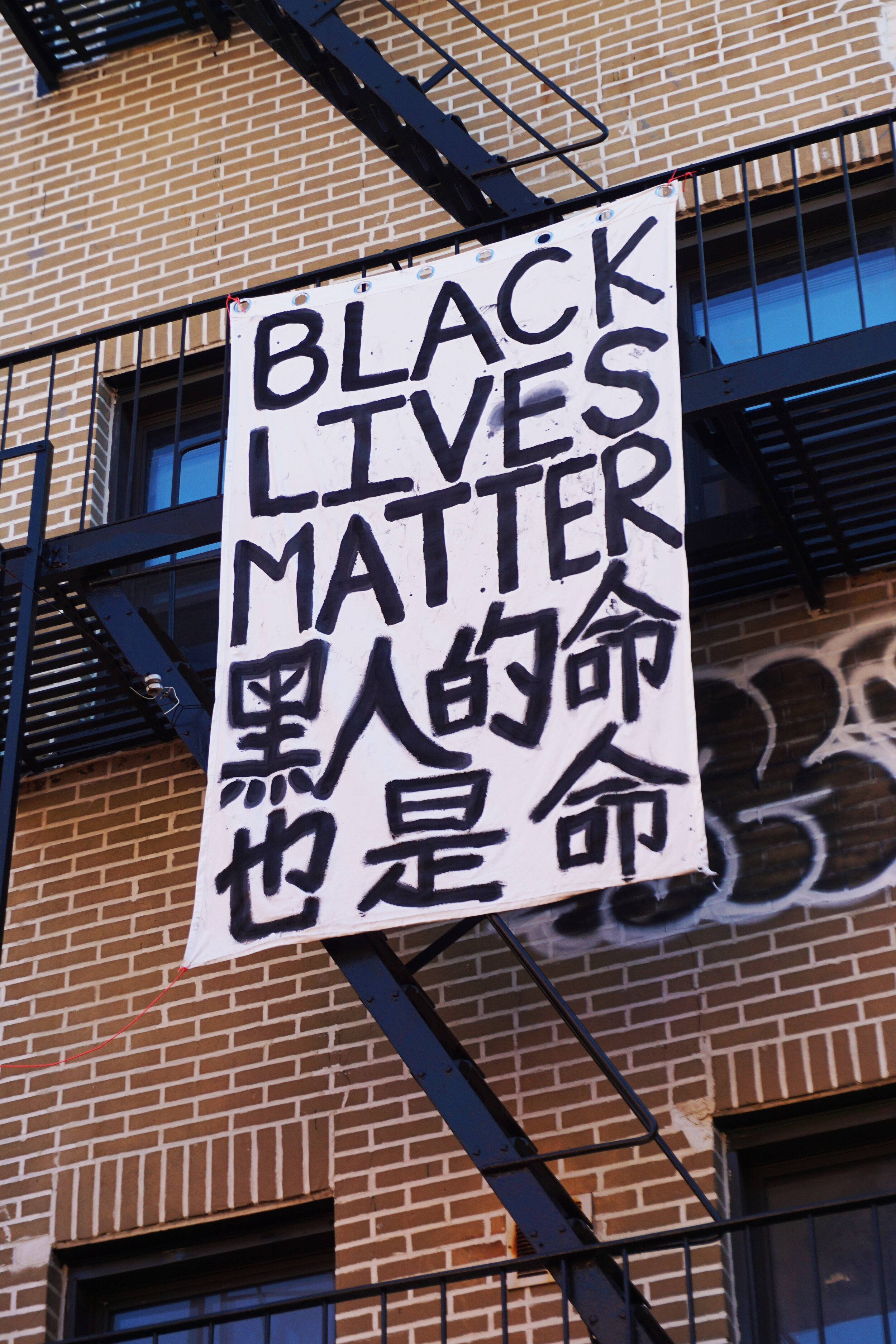




![The story behind “A Great Day in Harlem” photo: “[Photographer Art Kane] cooked up the idea of doing a big portrait (with) all these musicians ... Harlem was where the jazz scene came into being and coalesced. It had to be in Harlem. And he wanted a…](https://images.squarespace-cdn.com/content/v1/55a0082ee4b08ef197481430/1594606145492-QP50FBWYI2LTUKIU0RGD/25jazz1-superJumbo.jpg)

